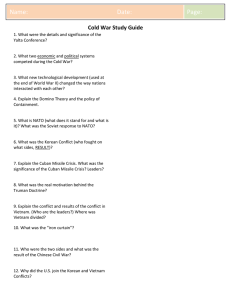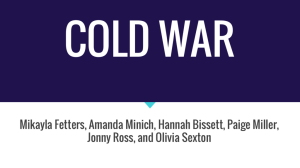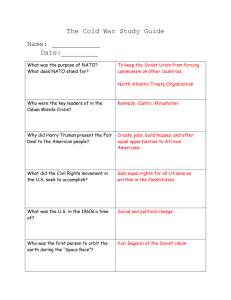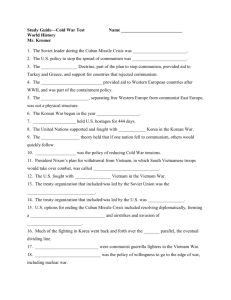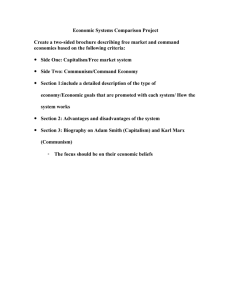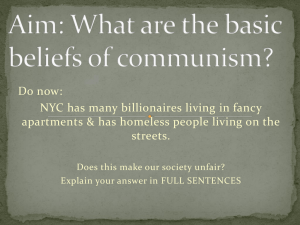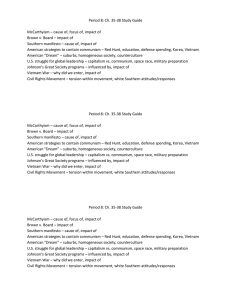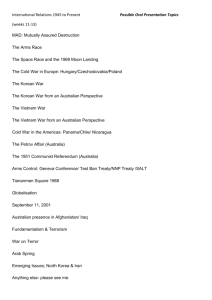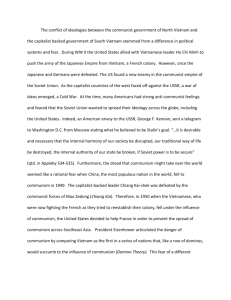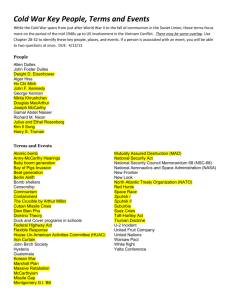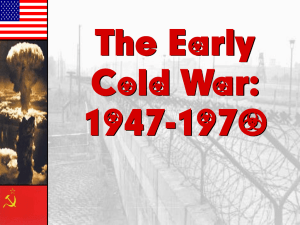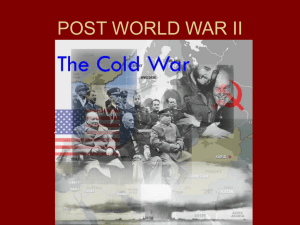COLD WAR - Buncombe County Schools Social Studies
advertisement
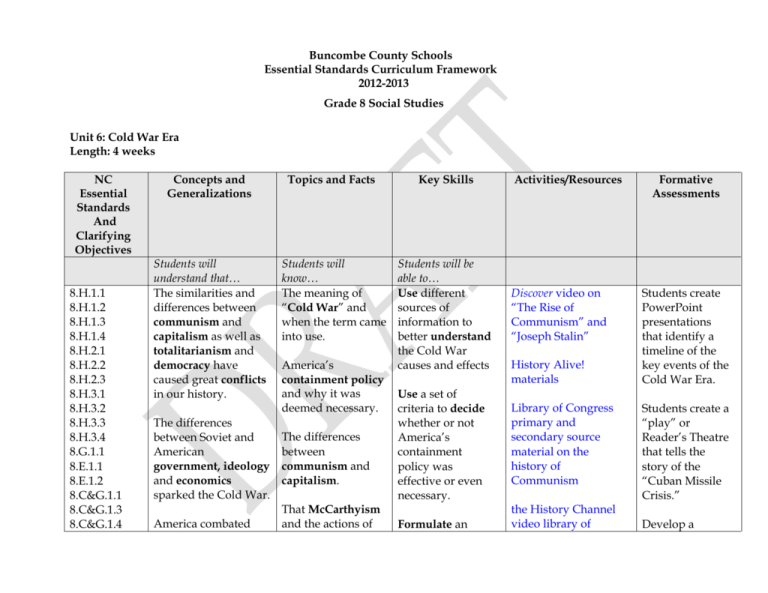
Buncombe County Schools Essential Standards Curriculum Framework 2012-2013 Grade 8 Social Studies Unit 6: Cold War Era Length: 4 weeks NC Essential Standards And Clarifying Objectives 8.H.1.1 8.H.1.2 8.H.1.3 8.H.1.4 8.H.2.1 8.H.2.2 8.H.2.3 8.H.3.1 8.H.3.2 8.H.3.3 8.H.3.4 8.G.1.1 8.E.1.1 8.E.1.2 8.C&G.1.1 8.C&G.1.3 8.C&G.1.4 Concepts and Generalizations Topics and Facts Key Skills Students will understand that… The similarities and differences between communism and capitalism as well as totalitarianism and democracy have caused great conflicts in our history. Students will know… The meaning of “Cold War” and when the term came into use. Students will be able to… Use different sources of information to better understand the Cold War causes and effects Discover video on “The Rise of Communism” and “Joseph Stalin” Use a set of criteria to decide whether or not America’s containment policy was effective or even necessary. Library of Congress primary and secondary source material on the history of Communism The differences between Soviet and American government, ideology and economics sparked the Cold War. America combated America’s containment policy and why it was deemed necessary. The differences between communism and capitalism. That McCarthyism and the actions of Formulate an Activities/Resources History Alive! materials the History Channel video library of Formative Assessments Students create PowerPoint presentations that identify a timeline of the key events of the Cold War Era. Students create a “play” or Reader’s Theatre that tells the story of the “Cuban Missile Crisis.” Develop a 8.C&G.2.1 8.C&G.2.3 Literacy Reading Standards 1,2,3,4,5,6,7,8 ,9,10 Literacy Writing Standards 1.a,b,c,d,e 2. a,b,c,d,e,f 3. 4, 5, 6, 7, 8, 9, 10 communist and totalitarian ideologies throughout the world with propaganda, war, alliances, and economic sanctions. There was a political and ideological divide within the American population between people who supported Cold war policy and those who challenged it. the House Committee on UnAmerican Activities (HUAC) and blacklisting were examples of abuse of the Democratic process in the U.S. directly linked to the international anti-Communist furor. That the Korean War and the Vietnam Conflict were examples of the U.S. military policy of “containment.” Turning points and leadership from military, social, political, and economic perspectives led to the That the institution outcomes of the Cold of the Military War Era. Draft policy in the U.S. during the There has been a Vietnam crisis transition of caused individuals American policy from to choose between counter-communism their personal to counter-terrorism. freedom and their duty to country. How terms like Draft Dodger, opinion based on primary and secondary texts detailing communism and capitalism and write about the pros and cons of each. Sequence and evaluate the significance of the events of the Vietnam War from early involvement through the final withdrawal of U.S. troops in 1975 including the antiwar protests on the home front. Evaluate the threat the Cuban Missile Crisis posed to America and draw conclusions about Kennedy’s leadership role through those 13 days. material on the Red Scare and McCarthyism “The Missiles of October” video that chronicles the Cuban Missile Crisis Double Bubble Map that compares and contrasts the principles of democracy and communism. Conscientious Objector, and anti war demonstrator became part of national vocabulary during the Vietnam Era. How President Kennedy and Premier Khrushchev led their nations to the brink of nuclear war during the Cuban Missile Crisis. The significance of the collapse of Soviet Union. Details surrounding the Reagan administration and its foreign military policy and “Trickle Down” economic policy. That political propaganda and economic boycotts were two strategies used effectively to Identify the causes of the collapse of the Soviet Union and formulate an opinion based on various sources as to the effects this had on the U.S. Evaluate the effectiveness of Reagan’s Trickle Down economic policy and compare it to policies that are more directed to stimulate growth through middlelow income earners. put an end to the Cold War. Similarities and differences between Cold War policies and current foreign policies. The reasons for the transition of American policy from countercommunism to counter-terrorism.
